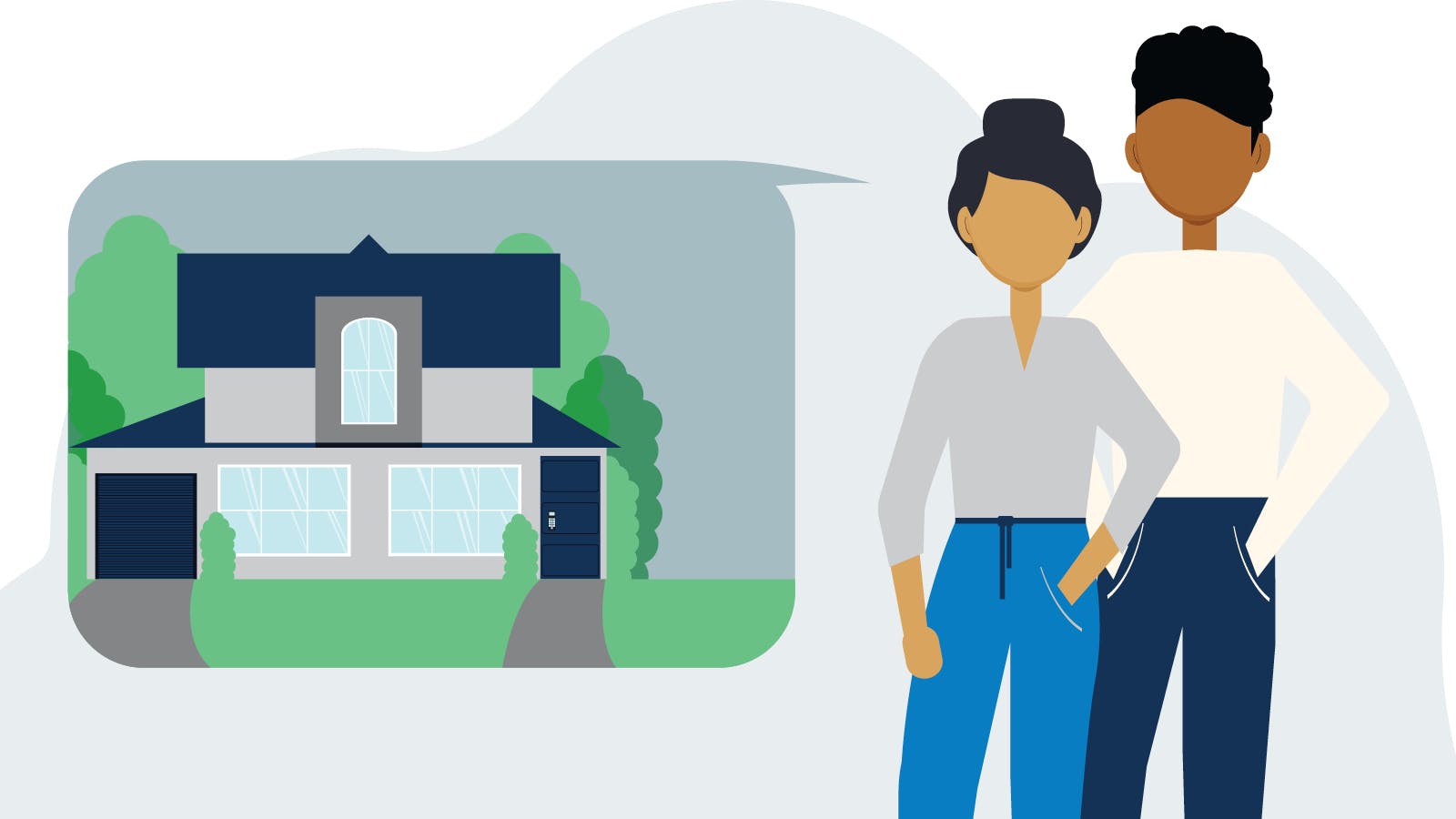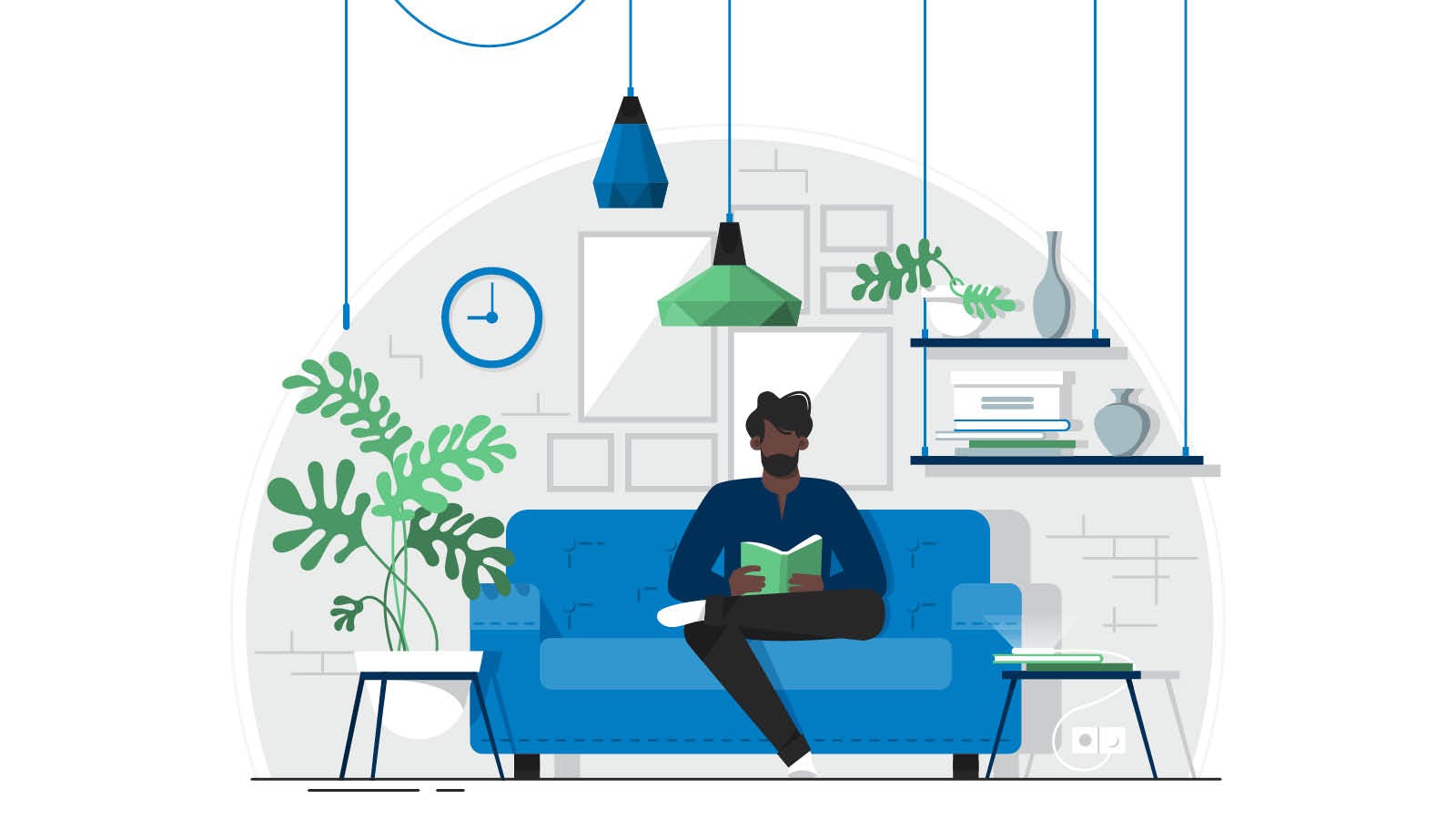Recent headlines have told the story of a highly competitive housing market, sky-high prices and an uphill battle for the average homebuyer. But who exactly is the average homebuyer? Odds are these outlets are detailing the experience of white, straight and cisgendered buyers. For LGBTQIA+ homeseekers, there may be additional obstacles.
Housing presents a unique challenge to potential buyers who identify as LGBTQIA+. After all, these individuals are more likely to experience poverty, discrimination and even inequitably high-priced neighborhoods in pursuit of their dream home.
If you’re an LGBTQIA+ homebuyer preparing to start your home search, understanding the statistics behind LGBTQIA+ homeownership could be key. So, here are the 4 numbers that every LGBTQIA+ homeseeker needs to know:
49.8%: LGBT Homeownership Rate
Homeownership rates, or the percentage of individuals within a demographic who own as opposed to rent, can give you an idea of socioeconomic health, quality of life and overall stability. This figure, while always fluctuating, can help gauge the progress that individuals of various identities have made in regard to achieving the American Dream of homeownership. The unfortunate reality? Minority homeownership rates tend to lag behind those of white, straight, cisgendered Americans.
For example, according to a recent study, individuals who self-identified as LGBT had a homeownership rate of only 49.8%, which is significantly lower than the average U.S. rate of 65.5%. What’s more, homeownership rates shrink even further when potential owners have additional minority identities. Primary concerns include a desire to wait for the right time to buy, lack of down payment funds, and, perhaps most notably, fear of discrimination.
Insidious professionals are, unfortunately, out there. But assembling an accepting and trustworthy homebuying team could make or break the process for LGBT-identifying individuals. Working with the right people, who can ease your concerns, whatever they may be, can help advance your goals all while bolstering minority homeownership rates. Networks, such as the RE/MAX Rainbow Alliance, are made up of members and allies of the LGBTQIA+ communities. Organizations like this provide valuable resources for connecting with a supportive homebuying team.
46%: Percentage of LGBT People Who Fear Discrimination in Housing
The unfortunate reality is that many would-be LGBT homeowners see discrimination in housing as a major roadblock. And, with homeownership’s complicated and often exclusionary history, who can blame them? The good news is that there are a few comprehensive measures in place working to prevent this kind of discrimination.
For example, 1968’s Fair Housing Act outlawed housing discrimination based on race, gender or identity. Then, a 2021 executive order tacked on specific protections for LGBTQIA+ individuals.
Fair lending laws also prohibit mortgage professionals from considering race, color, national origin, religion, sex, familial status or disability when approving or denying loan applications. Moreover, in 2021, the Consumer Financial Protection Bureau (CFPB) stated that it, “will not tolerate discrimination against the LGBTQ+ community.” The CFPB further clarified that such actions are illegal.
In addition to assembling an accepting homebuying team, familiarize yourself with your rights as a consumer. If you or someone you know does experience discrimination within the housing industry, be sure to file a complaint with the Department of Housing and Urban Development to hold housing professionals accountable and fight future instances of discrimination.
70%: Percentage of LGBT People View Money as an Obstacle to Homeownership
Of course, homeownership is a powerful path to financial freedom. This is even more applicable when it comes to minority homeownership, as LGBT adults are 15% more likely to experience poverty than cisgender, straight adults.
In fact, the primary reason among LGBT individuals for holding off on homeownership is a lack of funds, specifically for a down payment. One Freddie Mac survey even found that 25% of potential buyers believed that their down payment could not be less than 20%. Keep in mind that, in reality, some buyers are able to put 3.5% or even 0% down, depending on the loan program and financial situation.
If financials are a concern, a comprehensive homebuyer education course can go a long way in building an understanding of the homeownership process. Experienced agents and home finance professionals can also provide guidance, support and advice along the way.
Not quite there yet? You can truly begin at the beginning by building a budget around your target down payment amount. We promise, saving up for the largest (and most exciting) purchase of your life doesn’t have to be scary!
63%: Price Differential in LGBT-Friendly Neighborhoods
It’s no secret that affordability is being seriously squeezed across the nation. Between COVID-induced low interest rates and increased time spent at home, persistent demand is driving record price increases and effectively pricing many would-be homeowners from all walks of life out of the market. LGBTQIA+ households are no exception.
In 2020, Zillow found that areas with explicit LGBT-friendly protections are actually priced 63% higher than comparable areas without similar policies. The challenge of choosing between a safe and accepting neighborhood or paying exponentially more for a home could be contributing to both financial anxieties and fear of discrimination, further delaying homeownership for LGBT buyers.
To fight rising prices, consider building a comprehensive budget, exploring additional neighborhoods and getting specific with your wants versus needs. Consulting with a knowledgeable mortgage professional can also uncover the most cost-effective path forward, so you can find the right fit, at the right price.
LGBT and Minority Homeownership
Unfortunately, many LGBT individuals face more than their fair share of roadblocks on the path to homeownership. From financial concerns to housing discrimination, fears and anxieties are understandable. They shouldn’t stop you from achieving your own version of the American Dream, though.
By understanding the numbers, and internalizing what they represent, LGBT buyers can prepare themselves for the process and go in informed. Then, they can build a strong homebuying team, develop a down payment savings plan and, eventually, bolster that LGBT homeownership rate.
When in doubt, consider connecting with an accepting real estate and/or seasoned home finance professional. The National Association of Gay and Lesbian Real Estate Professionals (NAGLREP) is a great place to start!
Published on June 13, 2022


